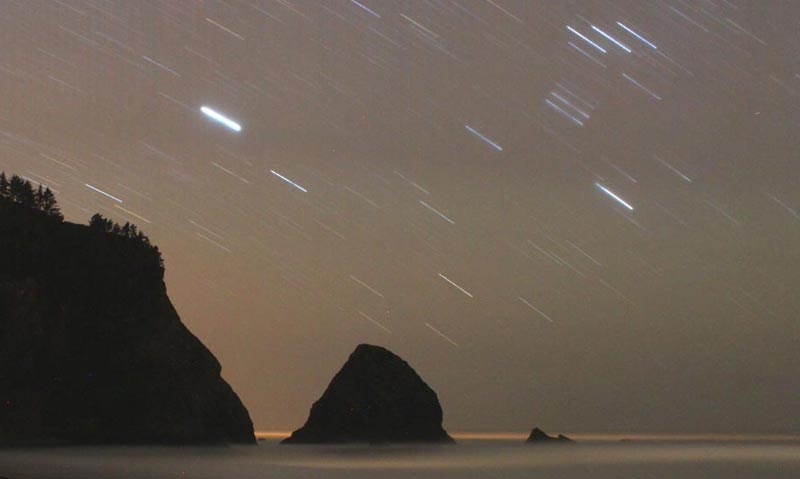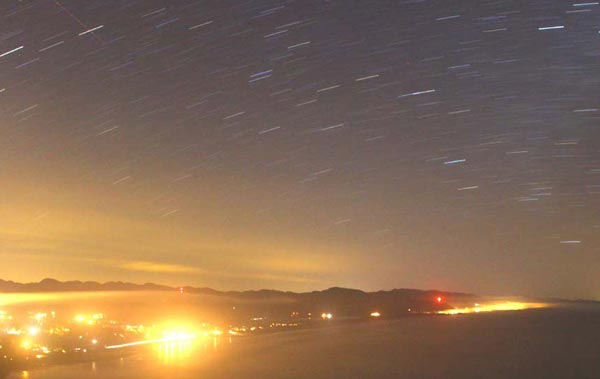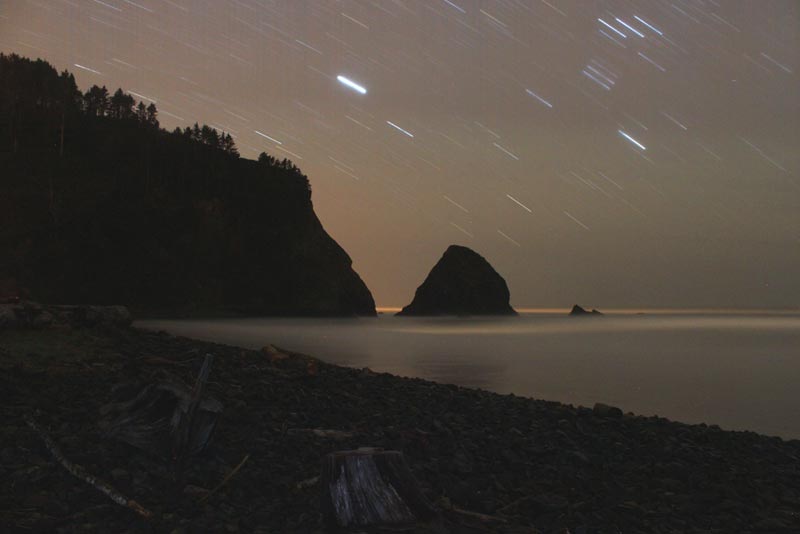Astronomer Answers Why Are Stars Different Colors Above Washington / Oregon Coast?
Published 11/29/20 at 7:15 PM PDT
By Oregon Coast Beach Connection staff

(Bend, Oregon) – Recent years and technical advancements have ushered in a new era in nighttime photography. From star trails to crystalline captures of the galaxy and other random suns in amazing clarity, these are not your grandparents’ camera gear anymore.
Includes exclusive listings; some specials in winter
In Cannon Beach:
Includes rentals not listed anywhere else
In Manzanita, Wheeler, Rockaway Beach:
Some specials for winter
In Pacific City, Oceanside:
Some specials for winter
In Lincoln City:
Some specials for winter
In Depoe Bay, Gleneden Beach:
Some specials for winter
In Newport:
Look for some specials
In Waldport
Some specials for winter
In Yachats, Florence
Some specials for winter
Southern Oregon Coast Hotels / Lodgings
Reedsport to Brookings, places to stay; winter deals
No matter where you are, along the Oregon coast / Washington coast or not, many photographers wonder still: why are the stars different colors? You can even see this with the naked eye to some degree, but night photographs really bring out the differences.
Down in central Oregon, Bend’s Pine Mountain Observatory has a massive telescope aimed upwards at the heavens, capturing images we regular Earthling photogs can only dream of snagging. So who better to ask than one of the astronomers there?
Alton Luken is one of those lucky scientists who works for the University of Oregon facility, and he explained to Oregon Coast Beach Connection that most of the different shades of star colors you see come from the surface temperature of the stars themselves.

“The big hitter in star color is temperature,” Luken said. “The larger stars burn hotter. The hotter they are the more the stars are towards a white and blue. Vega is a very large star and we primarily see that as a white or blue.”
On the other hand, the cooler stars lean towards red. These are often smaller, but it gets interesting here because not all cooler stars are small.
“As you go down the scale from large to smaller stars, surface temperatures grow cooler,” he said. “The temperatures lean much more towards red - oranges and reds. Beyond red you can go into pinks. Red giants are very large but they burn red. They’re giants but they’re cooler.”
Red giants are a bit of a sad story, really. Aluken said they don’t start off that way but many stars “bloat out” and cool when they’re near the end of their lives. It’s something our own sun is expected to go through some day, in something like four or five billion years.
However, there’s yet another kink in this chain of stellar shade explanations. Our own atmosphere plays a part, especially to the naked eye, but not so much the camera.
Aluken said it’s mostly star temperature, but it’s complicated.

“It’s complicated because of our atmosphere,” he said. “We look through this atmospheric medium. When you’re photographing stars that are low on the horizon, you’re looking through many layers of atmosphere. When that happens the atmosphere has a prism effect. And since starlight is made of many different colors, you’re catching the moments of different colors.”
Case in point: Oregon Coast Beach Connection recently did a story on a violent shade changes the star Sirius made in the sky on colder nights. (Bizarre Star Twinkle Leads to Discovery: Portland, Oregon, Washington Coast Astronomy) According to Portland’s National Weather Service office, that wild twinkling came from a turbulent atmosphere. As the layers of atmosphere change abruptly, so do the colors of the star.
However, cameras see things differently and they don’t always catch the same subtle shades humans do in real time, as in the video featured in that story. On the other hand, lenses see plenty of different things we don’t, such as the varied shades between stars. They’re more pronounced in a camera.
The more straight up a star is, the more its color is dictated by temperature, Aluken said. The farther down the horizon, where there are more layers, the more the star’s color can be affected by weather phenomena way out there.
All the air around us is a bit of a pest to astronomy observatories, such as Pine Mountain in Bend, Aluken said. It’s not as simple as cloud cover shutting down the operation. Crazy atmospheric movement out there can screw up their imaging.
There is yet another factor that seems possible in affecting how stars look: the Doppler effect. That dictates that something coming towards you will have a blue shift, while something going away will have a red shift.
However, Aluken said that’s more the realm of spectroscopy, a way of imaging colors and the Doppler shift, especially when it comes to galaxies. It’s not part of the answer in this case, he said.
“So Doppler is a real and a very handy tool but the human eye really can’t discern Doppler shift,” Aluken said.
Aluken offered an interesting tip to those photographing the night skies, whether you’re on the Oregon / Washington coastlines or in Colorado, Maine or wherever.
Oregon Coast Hotels for this event - Where to eat - Map
He said you can get a preview of the accuracy of your night shot by spotting the vapor trail of a jet – if you can find one.
“If the vapor trail is short and stubby there’s very little moisture in the atmosphere,” he said. “Water vapor is made of little droplets, and droplets act as prisms. So you can have even more of this color shifting business.”
Pine Mountain Observatory is normally open to visitors during the summer, but not this past year because of the pandemic. 541-382-8331 https://pmo.uoregon.edu/
Oregon Coast Hotels in this area - South Coast Hotels - Oregon Coast Vacation Rentals - Where to eat - Maps - Virtual Tours
Oregon Coast Vacation Rentals
Oregon Coast Lodging Specials
OREGON COAST HOTEL REVIEWS (hit refresh to see different reviews)
A1 Beach Rentals - in Lincoln City and Depoe Bay
Substantial rate reduction all rentals (50 percent) - click on site. Lincoln City hotel reviews
Historic Oregon Coast Motor Inn Retains Classic Vibes With Whimsy: Newport's ...
One of those throwbacks to the early days of tourism and motor lodges. Depoe Bay, Newport lodging reviews, hotel reviews
A True 'Pacific Treasure' on Oregon Coast, Rental Overlooks Lincoln City Calm...
A hot tub on that balcony, massive windows to the view. Hotel reviews, Lincoln City lodging, vacation rentals
New at Neskowin: Vacation Rental a Gateway to Secluded, Even Exotic Stretch o...
Neskowin North is just killin' it with oceanfront glory and a unique beach. Neskowing lodging reviews, Pacific City reviews, Pacific City hotels
More About Oregon Coast hotels, lodging.....
More About Oregon Coast Restaurants, Dining.....
Washington Coast / Oregon Coast Articles (stories are random: hit reload to see different articles)
Chances of Aurora Borealis Through Sun for Washington, Oregon, the CoastNorthern lights possible but you'll need a camera to see. Astronomy, sciences
Comet ATLAS Captured Above Oregon, Even Coast - Photos, Video
Surprise astronomy moments all over Oregon on Sunday. Weather
Jupiter, Planets Put on Show in December - Geminids Now Above Oregon, Washing...
Jupiter at its brightest, Geminids peak Dec 13 - 14. Sciences, surf, astronomy
Equinox Along Oregon, Washington, Coast: Say Goodbye to Summer, Saturn's Rings
Fall begins as Saturn's go flat to our view. Astronomy. Sciences
Christmas Eve 'Trinity' Above Washington / Oregon Coast? Holiday Beach Astronomy
A rather stunning triangle low in the SW skies. Weather. Gleneden Beach
Aurora Borealis Tonight: Timing, Display Strength for Oregon, Washington, Coa...
Through 2 a.m. likely best, but some lights possible through dawn June 1 - 2. Space weather, astronomy
UPDATES: Thursday's Aurora Borealis Over Washington, Oregon, Coast Latest - C...
Severe G4 Storm Watch for Thurs, Maybe Fri; also comet in west. Astronomy
Green Fireball Lights Up Portland, Washington, Eugene, Oregon Coast - Video
In slow motion; seen up and down the west coast. Find out what it's made of. Sciences, astronomy
Back to Oregon Coast
Contact Advertise on Oregon Coast Beach Connection
All Content, unless otherwise attributed, copyright © Oregon Coast Beach Connection. Unauthorized use or publication is not permitted



















































